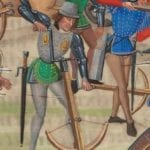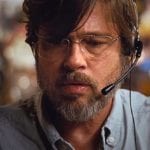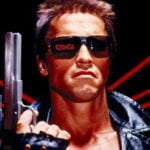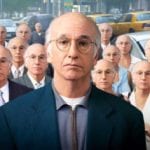 Technology
Technology  Technology
Technology  Humans
Humans 10 Everyday Human Behaviors That Are Actually Survival Instincts
 Animals
Animals 10 Animals That Humiliated and Harmed Historical Leaders
 History
History 10 Most Influential Protests in Modern History
 Creepy
Creepy 10 More Representations of Death from Myth, Legend, and Folktale
 Technology
Technology 10 Scientific Breakthroughs of 2025 That’ll Change Everything
 Our World
Our World 10 Ways Icelandic Culture Makes Other Countries Look Boring
 Misconceptions
Misconceptions 10 Common Misconceptions About the Victorian Era
 Mysteries
Mysteries 10 Strange Unexplained Mysteries of 2025
 Miscellaneous
Miscellaneous 10 of History’s Most Bell-Ringing Finishing Moves
 Technology
Technology Top 10 Everyday Tech Buzzwords That Hide a Darker Past
 Humans
Humans 10 Everyday Human Behaviors That Are Actually Survival Instincts
 Animals
Animals 10 Animals That Humiliated and Harmed Historical Leaders
Who's Behind Listverse?

Jamie Frater
Head Editor
Jamie founded Listverse due to an insatiable desire to share fascinating, obscure, and bizarre facts. He has been a guest speaker on numerous national radio and television stations and is a five time published author.
More About Us History
History 10 Most Influential Protests in Modern History
 Creepy
Creepy 10 More Representations of Death from Myth, Legend, and Folktale
 Technology
Technology 10 Scientific Breakthroughs of 2025 That’ll Change Everything
 Our World
Our World 10 Ways Icelandic Culture Makes Other Countries Look Boring
 Misconceptions
Misconceptions 10 Common Misconceptions About the Victorian Era
 Mysteries
Mysteries 10 Strange Unexplained Mysteries of 2025
 Miscellaneous
Miscellaneous 10 of History’s Most Bell-Ringing Finishing Moves
Top 10 Best Film Editing Sequences
As Walter Murch once said – “Film editing is now something almost everyone can do at a simple level and enjoy it, but to take it to a higher level requires the same dedication and persistence that any art form does”. The editing in film often goes unnoticed. However, if one does not notice the editing, then it is doing its job. The editor works on the subconscious of the viewer, and controls “the story, the music, the rhythm, the pace, shapes the actors’ performances, ‘re-directing’ and often re-writing the film during the editing process, honing the infinite possibilities of the juxtaposition of small snippets of film into a creative, coherent, cohesive whole.” Wikipedia
10. Cidade De Deux – City Of God
A brilliant use of jump cutting and cutting between two different sets of action. This is incredibly technical editing at it’s best. It is particularly spectacular because it is at the very start of the film, as it has to introduce the main characters.
9. Platoon – Spoiler
This very famous sequence in film is on the list because of the use of Adagio for Strings, a very slow moving piece of music, set to such fast and brutal action. It uses such simple imagery and enhances it to incredible effect by using slow motion and close-ups sparingly.
8. One Flew Over The Cuckoo’s Nest
This sequence shows how the editor can slowly and subtly move the viewer into the scene. Watch how the camera is cropped closer and closer to the characters between each take. The editor also knows exactly who to cut to at any time, choosing to cut to McMurphy only to allow the viewers to ‘breathe’ during the intense argument.
7. Silence of the Lambs
Again, an excellent example of how the editor can move closer to the faces of the characters. In this famous scene, the camera starts at one side of the room, and ends up almost up the nose of Hannibal Lecter, finally deciding to go inside the bars of the cell to make Clarice seem vulnerable.
6. 12 Angry Men – Spoilers
Sometimes the best editing is to just leave it alone. This scene shows great editing by giving as much screen time to Lee J. Cobb’s monologue. However, the editor also works on the viewers subconscious, by showing him alone and isolated in the frame, whilst showing other juror’s in pairs. The editing also crops closer to him later in the scene, making it seem even more powerful and important.
5. The Battleship Potemkin
Absolutely revolutionary editing! This scene, the famous baby carriage down the stairs scene, has been copied and spoofed numerous times, most notably in ‘The Untouchables’. It uses the simple technique of continually cutting to a baby carriage in danger, to build tension and create a sense of impending doom.
4. Raging Bull – Spoiler and violence
You’ll have to ignore the strange commentary over this clip (it was the only one YouTube had). One of the most famous boxing scenes in film history. It shows La Motta’s isolation, despair and fragility from the world, as he becomes a man without hope. The editing reflects this by including only the sound of cameras, and continually showing La Motta bouncing against the ropes in slow motion. It also expertly moves between fast and slow cutting, to build the tension towards the final punch.
3. Saving Private Ryan – violence
Simply incredible editing on a hugely technical scale. This scene deserves its place on the list simply as a technical achievement by itself. However, the editor manages to create fear against an unseen enemy. He also borrows the same technique used in ‘Raging Bull'(see above) by moving between fast and slow cutting. This is used on the beach when all war sounds are drained out and Tom Hanks looks hopelessly across the war-torn landscape.
2. The Insider
This is the kind of editing that you would never notice unless you were looking. In this scene, the editor breaks the 180-degree rule intentionally to create disorientation to the viewers (http://en.wikipedia.org/wiki/180_degree_rule). I have never seen this done to such great effect as it is done here. It also cuts between the two characters effortlessly and moves closer to the characters to subconsciously involve the viewers.
1. The Conversation
Here we go, undoubtedly in my opinion the greatest editing sequence ever put to film. It parallels between two different conversations at once, one in the park and one in which Harry Caul listens to the audio and argues with his employee (played by the late John Cazale). The sequence involves phenomenal editing just to mix two different scenes into one without disrupting the flow. It also comments on how Harry Caul will willingly spy on another person, but still try to respect their privacy. The intruding eye of the flashback helps to counteract his morals, making him seem foolish and alone at the end of the scene.
Notable Omissions: Bullitt – the car chase, Marathon Man – torture scene, Traffic – end scene, A Clockwork Orange – fight scene, Heat – bank robbery.
Contributor: MojoRisin








